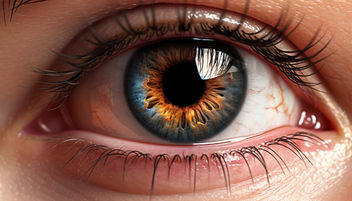Glaucoma: Treatment Overview
June 6, 2023Glaucoma is a disease often caused by pressure in the eye that can lead to irreversible loss of vision. Treating glaucoma early is key to limiting the damage to your vision. Luckily, there are a number of glaucoma treatment options available.

The Inside Rx Blog
Get the Inside Scoop on tips & tricks that may help your family save on prescriptions!
Subscribe to stay up to date with the latest news and tips
Reviewed by the Office of Clinical Evaluation and Policy (OCEP), Evernorth
Glaucoma is a group of eye diseases that can lead to irreversible vision loss if left untreated. It affects over 3 million Americans and accounts for up to 12% of all cases of blindness. The disease is characterized by damage to the optic nerve, often due to high pressure in the eye.
Open-angle glaucoma is the most common form of glaucoma and, although there is no cure, various treatment options are available, including medication and surgery. Early glaucoma treatment is important to prevent further vision loss and maintain a good quality of life.
Here we’ll discuss an overview of the different types of glaucoma treatment available and how they work.
Glaucoma Treatment Options
The treatment options for glaucoma include medications and surgical procedures to reduce fluid and pressure in the eye. Reducing pressure in the eye can help slow the progression of the disease and reduce complications. A healthcare provider can determine the best treatment option based on an individual’s needs and treatment goals.
Medications
The first line of defense in glaucoma treatment typically involves medications. The most common form of medication used to treat glaucoma is an eye drop. Eye drops for glaucoma are designed to lower the intraocular pressure (IOP) within the eye, which is the primary cause of optic nerve damage in glaucoma. There are several different classes of glaucoma medications, including:
- Prostaglandin analogs: These medications increase the outflow of fluid from the eye, thereby reducing IOP. Examples include latanoprost (Xalatan®), bimatoprost (Lumigan®) and travoprost (Travatan Z®). This class of drugs is the most frequently prescribed eye drop because they are effective, well tolerated, and can be instilled once daily.
- Beta-blockers: By reducing the production of fluid in the eye, these medications help to lower IOP. Timolol (Timoptic®) and betaxolol (Betoptic®) are examples of beta-blockers used in glaucoma treatment.
- Parasympathomimetic agents: Pilocarpine and echothiophate (Phospholine Iodide®) can help increase fluid outflow from the eye to reduce pressure.
- Alpha agonists: Medications like brimonidine (Alphagan P®) work by both reducing fluid production and increasing fluid outflow, thus lowering IOP.
- Rho kinase inhibitors: A newer class of glaucoma medications, rho kinase inhibitors, such as netarsudil (Rhopressa®), work by increasing fluid outflow from the eye.
- Carbonic anhydrase inhibitors: These medications, like dorzolamide (Trusopt®) and brinzolamide (Azopt®), reduce fluid production in the eye to lower IOP.
Glaucoma medications need to be used consistently and as prescribed to be effective. It’s important to consult an eye care professional about any side effects or problems with a prescribed medication.
Laser Therapy
If medications are not effective in controlling IOP, or if a patient is unable to tolerate them, laser therapy may be considered as a glaucoma treatment option. There are different types of laser procedures, including:
- Laser trabeculoplasty: This procedure helps to improve the flow of fluid through the eye's drainage system, reducing IOP. It can be performed with either an argon laser (argon laser trabeculoplasty) or a diode laser (selective laser trabeculoplasty). However, selective laser trabeculoplasty is the most common form of laser trabeculoplasty. SLT is a newer, more advanced form of laser trabeculoplasty that uses lower energy levels and causes less damage to the trabecular meshwork compared to ALT.
- Laser iridotomy: Recommended for patients with angle-closure glaucoma, this procedure involves creating a small hole in the iris to allow fluid to flow more freely, thus reducing IOP.
Laser therapy is generally a safe and effective glaucoma treatment, with few complications. However, the effects may wear off over time and additional treatments may be necessary.
Surgery
Surgery is typically considered a last resort in glaucoma treatment when medications and laser therapy have not been successful in controlling IOP. Surgical options include:
- Trabeculectomy: This procedure involves creating a new drainage pathway for fluid to exit the eye, effectively lowering IOP.
- Glaucoma drainage devices: These drainage implants create an artificial drainage system to facilitate fluid outflow and lower IOP.
Surgical interventions carry certain risks and potential complications, such as infection or scarring. It’s important to discuss the benefits and risks of these procedures with an eye care professional to determine the most appropriate course of glaucoma treatment.
Celebrex
$ 133.55Ibandronate Sodium
$ 16.01Key Takeaway
The early detection and treatment of glaucoma are important for preventing irreversible vision loss. With a variety of treatment options available, including medications, laser therapy and surgery, it is possible to manage the disease and slow its progression.
People who are at risk of developing glaucoma, such as those with a family history of glaucoma, those over the age of 60, or those with diabetes, should have regular eye examinations. Even if you are not in a high-risk group, getting a comprehensive dilated eye exam by the age of 40 can help catch glaucoma early. An eye care professional can help determine the best glaucoma treatment plan that suits a person’s needs.
Sources:



